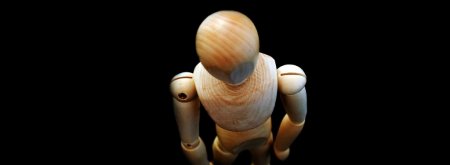Does Astronomy Reveal Joshua’s Long Day?
Robert C. Newman investigates a story that has been used by Christians for many years to validate the reliability of the Bible. He finds problems with it and draws useful lessons for the apologist or anyone trying to engage with sceptics.
Since 1970 various versions of an exciting 'science apologetics' story have appeared in books, newspapers, and magazines across the United States and beyond. Many people have read the story or heard it and passed it along to others, thinking it a credible account. As a Christian and a scientist, I felt an obligation to check out the story's veracity for myself and to share my findings with others. My findings will serve, I hope, as both an exhortation and caution.
According to the story, usually entitled 'The Space Program Proves the Bible' or something similar, Harold Hill, president of Curtis Engineering and a consultant to the space program, reports that space scientists in Greenbelt, Maryland, bumped into a big "problem" when checking their computer data for future orbital positions of the Sun, Moon, planets, etc. The problem supposedly proved to be a missing day somewhere in the past, a day which one of the religious team members identified for the unchurched others as the day the Sun stood still for Joshua (Joshua 10:12-14).
The problem persisted, however, according to the story, because only 23 hours and 20 minutes was missing at the time of Joshua, leaving 40 minutes unaccounted for. Then the same fellow remembered that the Sun's shadow moved backward ten steps – exactly 40 minutes, the story says – on the stairway of Ahaz at the time of Hezekiah's illness (2 Kings 20:10-11). The story ends with an exultant declaration that God is rubbing scientists' noses in the truth of His Word.
prove all things; hold fast to that which is good
- St Paul
Naturally, many Christians were and still are excited about the story. We love to read and hear how scientific findings support our faith, but we are also commanded in Scripture to "prove all things; hold fast to that which is good" (1 Thessalonians 5:21). Often, however, we are too rushed and eager to undertake such testing. We certainly don't want to appear to our fellow believers as harshly skeptical or critical.
William Willoughby, the religion editor of the Washington, D.C. Evening Star, was the first, I think, to follow up on this story and publish what he found. In his 'Washington Perspective' column of August 8, 1970, Willoughby reported that when he contacted NASA's Goddard Space Flight Center in Greenbelt, no one knew anything about the events recorded in the story. Willoughby then contacted Harold Hill in Baltimore. Hill stuck to his story, which he claimed to have on good authority, but he said he could not locate his documentation.
These facts by themselves cast a shadow on the story, but doubt increases when certain details of the story itself are examined. The story credits computers as the error detectors. Is such detection possible? Consider that for either computers or their human programmers to detect a missing day, the programmers must input a fixed time marker predating the missing day. Moreover, the story suggests that the scientists found not a day, exactly, rather 23 hours and 20 minutes at one place in history (between 1400 and 1250 BC, according to most scholars) and the remaining 40 minutes in another (about 700 BC). So, in this case, we need two fixed points: one before the time of Joshua and another between the times of Joshua and Hezekiah. These fixed points must be known to astronomers and historians with an accuracy of a few minutes to make possible the detection of such a precise discrepancy.
One method that could produce some accuracy would be recorded observations of solar eclipses of the Sun, for these are total only along narrow paths and only for a few minutes at any specific locality. However, the earliest datable eclipse of the Sun occurred in the year 1217 BC, after the time of Joshua (see Encyclopedia Britannica, revised 14th edition, s.v. 'eclipse'). In any case, ancient eclipse observations are not given with an accuracy of a few minutes even by local time. Therefore, confirmation of Joshua's 23 hours and 20 minutes (or even 24 hours) remains, to date, beyond the reach of human or computerized calculations. On this basis alone, I must regard the computer story as a hoax.
I must regard the computer story as a hoax
Even without these computer questions, however, I found another basis for my conclusion: the main features of this story are older than either NASA or electronic calculation. In his Harmony of Science and Scripture, published in 1936, Harry Rimmer recounts the following story (pp.281-82):
There is a book by Prof. C.A. Totten of Yale, written in 1890, which establishes the case [for biblical reliability] beyond the shadow of a doubt. The condensed account of his book, briefly summarized, is as follows:
Professor Totten wrote of a fellow-professor, an accomplished astronomer, who made the strange discovery that the earth was twenty-four hours out of schedule! That is to say, there had been twenty-four hours lost out of time. In discussing this point with his fellow-professor, Professor Totten challenged this man to investigate the question of the inspiration of the Bible. He said, "You do not believe the Bible to be the word of God, and I do. Now here is a fine opportunity to prove whether or not the Bible is inspired. You begin to read at the very beginning and read as far as need be, and see if the Bible cannot account for your missing time."
The astronomer accepted the challenge and began to read. Some time later, when the two men chanced to meet on the campus, Professor Totten asked his friend if he had proved the question to his satisfaction. His colleague replied, "I believe I have definitely proved that the Bible is not the word of God. In the tenth chapter of Joshua, I found the missing twenty-four hours accounted for. Then I went back and checked up on my figures and found that at the time of Joshua there were only twenty-three hours and twenty minutes lost. If the Bible made a mistake of forty minutes, it is not the Book of God!"
Professor Totten said, "You are right in part at least. But does the Bible say that a whole day was lost at the time of Joshua?" So they looked and saw that the text said, "about the space of a whole day."
The word "about" changed the whole situation, and the astronomer took up his reading again. He read on until he came to the thirty-eighth chapter of the prophet Isaiah. In this chapter, Isaiah has left us the thrilling story of the king Hezekiah, who was sick unto death. In response to his prayer, God promised to add fifteen more years to his life. To confirm the truth of His promise, God offered a sign. He said, "Go out in the court and look at the sundial of Ahaz. I will make the shadow on the sundial back up ten degrees!" Isaiah recounts that the king looked, and while he looked, the shadow turned backward ten degrees, by which ten degrees it had already gone down! This settled the case, for ten degrees on the sundial is forty minutes on the face of the clock! So the accuracy of the Book was established to the satisfaction of this exacting critic.
Comparing Rimmer's account with the NASA computer story, notice that both include the same numbers: one day missing overall, 23 hours and 20 minutes at the time of Joshua and 40 minutes at the time of Hezekiah. Here, too, we have a dramatic tale of a skeptic's coming to see the truth of Scripture. The parallels between the two are obvious, but we must go back to Totten, too.
Charles Adiel Lewis Totten is listed in Who Was Who in America (1:1247) as a professor of military science at Yale from 1889 to 1892, who resigned to spend more time on his religious studies. He was a British-Israelist, believing that the Anglo-Saxons were the lost tribes of Israel, and an Adventist, who predicted the reign of Antichrist would occur in the seven-year period from 1892 to 1899. Among his many writings is Joshua's Long Day and the Dial of Ahaz, published, as Rimmer reports, in 1890. After some exertion and considerable frustration, I succeeded in locating a copy of the third revised edition, published in 1891. Since then the work has been reprinted by Destiny Publishers of Merrimac, Massachusetts.
Totten relies on an assumed date of creation – September 22, 4000 BC – as the 'known' fixed point before the long day of Joshua
Reading Totten's book brought another surprise: the dramatic story of a skeptic convinced does not appear. Instead, Totten himself, a non-skeptic all along, seeks to show that a total of 24 hours is missing from past time, of which 23 hours and 20 minutes were lost in Joshua's day and 40 minutes at the time of Hezekiah. Totten does not actually reproduce the calculations by which he seeks to prove his 'case'; he merely gives the results. On pages 39, 59, and 61 of the third edition, the fact emerges that Totten relies on an assumed date of creation – the autumnal equinox, September 22, 4000 BC (p.61) – as the 'known' fixed point before the long day of Joshua. Taking the first day of creation to be a Sunday, by his understanding of Scripture, and finding that by calculating back from the present, September 22, 4000 BC would fall on a Monday, Totten concludes, "It can come so by no possible mathematics without the interpolation or 'intercalation' of exactly 24 hours" (p.59).
Totten's presentation obscures his method of discovery. Apparently, he started with a missing 24 hours, then decided from the ten "steps" mentioned in the Hezekiah incident to assign 40 minutes to that event (since the Sun moves about 10 degrees in 40 minutes), leaving 23 hours and 20 minutes to Joshua. But Totten has mentioned no fixed point between the times of Joshua and Hezekiah, and therefore he has no way of showing, independent of the biblical material or otherwise, that just such a division of the total time is warranted. Totten's work provides no objective support to the scriptural accounts.
Totten does cite the source for his exact creation date: it was calculated by the British Chronological Association. This group, headed by premier chronologist Jabez Bunting Dimbleby, used to publish an almanac entitled All Past Time in which they claimed to be able to account for every day since creation. Their 1885 almanac suggests that they established their chronology by adding up the numbers given in the Old Testament, using a liberal supply of speculation regarding ancient methods of keeping the lunar and solar calendars aligned. The work is dauntingly technical, but a few minutes' reading convinced me that their method of interpreting Scripture is often arbitrary. In light of archeology and a plethora of research data, few conservative Christians – even among those who believe the earth is much younger than geologists are willing to concede – would now accept the 4000 BC date as the precise date of creation. Totten's scheme depends entirely on knowing that date.
In summary, Totten's work has no foundation independent of the Bible, and it is questionable whether he has properly understood Scripture in regard to his one fixed point, the date of creation. Sometime between Totten's work in 1890 and Rimmer's in 1936, a story seems to have taken shape, a story in which Totten becomes a bystander and a skeptical astronomer becomes the calculator. Since 1936, the story seems to have been updated with the addition of 'space age' features, NASA's Space Flight Center scientists replacing the lone astronomer and computers to speed up the tedious calculations.
We have no need to invent stories to make Christianity look good
Does this story about a story have any lessons for us? I think so. All Christians like to see skeptics turn to Christ, and we may be tempted to 'bend' the truth a little to make a stronger argument. Perhaps we rationalize that the end (eternal life) justifies the means (a little shading of the truth). I strongly disagree.
In the long run, when the truth comes to light, such distortions, even if they're not deliberate, only give unbelievers a basis for claiming that the Bible writers might have been guilty of the same thing: distortion. Our attempt to 'help' God thus becomes an argument for unbelief. My hope is that Christians will demonstrate such zeal for truth that unbelievers will become convinced that we really have it. We would do well to lovingly but firmly rebuke the Rimmers and the Hills and others who damage our credibility. They (and we) must be careful in checking sources, especially for material favorable to our position. We have no need to invent stories to make Christianity look good. Excellent evidences for the truth of Christianity are available in abundance. Those who refuse to investigate it or choose to reject it will have no good answer on the day of judgment. Let's not supply them with a ready excuse.
© 1997 Dr Robert C. Newman
This article was originally published on reasons.org in January 1997. It is now available at: www.reasons.org/articles/does-astronomy-reveal-joshuas-long-day, posted on 9 July 2015.



